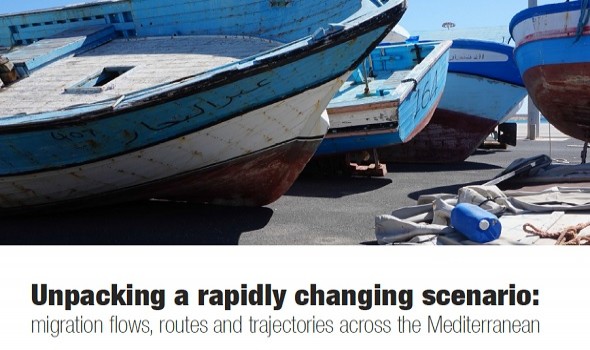Study shows the complexities and the policy implications
Study shows the complexities and the policy implications

Which are the processes which influence, inform and shape migration? Who are the migrants and refugees that arrive through the Central and Eastern Mediterranean; why did they use those routes and what motived them to leave their homes?
It is nothing new that people are on the move, including to and from Europe. But last year saw a four-fold increase from 2014 in the number of people coming to Europe. Media coverage described it as one of the biggest immigration crises in the continent, with few people questioning the real reasons that make people risk their life in the sea.
The research by the MEDMIG project launched in March 2016 has helped us to understand the reasons that in 2015 made over 1 million cross the Mediterranean in search of a more secure and promising life. The result of this research is the briefing paper: Unpacking a rapidly changing scenario: migration flows, routes and trajectories across the Mediterranean. Here we look at some of the key findings.
One of the key areas of the study was the investigation of the journeys and routes taken as the situation rapidly unfolded last year. Based on interviews with 500 refugees and migrants between September and December 2015 as well as numerous stakeholders including NGOs and Government officials the study explored the experiences, routes and motivations of refugees and migrants travelling through Italy and Malta (the Central Mediterranean route) as well as Greece and Turkey (the Eastern Mediterranean route)
Who are the people on the move?
The study found significant differences in the numbers and identity of those who take the different routes to Europe. While there has been little change in the numbers of people moving to Italy and Malta, there was a dramatic increase in the numbers of people taking the Eastern Mediterranean route. The nationality of those travelling has also changed, in particular the number of Syrians travelling to Italy went from 24% of arrivals in 2014 to just 5% in 2015 whereas in Greece, Syrians make up 56% of all sea arrivals.
Whereas it is predominantly individuals who travel through the Central Mediterranean route, the number of people travelling with their children is significantly higher on the Eastern Mediterranean route.
The researchers also found that the migrants and refugees arriving in Greece are better educated than the ones who choose the Italy route. “Two thirds of the people they had interviewed have a secondary school or university education. For those arriving in Greece the level rose to 78%, a third of who have a university education. Nearly three quarters (72%) of people were in employment before making the journey to Europe, though the proportion is significantly higher among those arriving in Greece (87%) than those arriving in Italy (60%)”.
In terms of age, gender and whether people are travelling with their children the study also found differences in each of the case study countries. Just over two thirds (65%) of those interviewed were aged 18-29 but the proportion was higher in Italy (76%) than in Greece (55%), reflecting the fact that those arriving in Greece were more likely to be older and travelling in family groups.
Why are people moving?
84% of sea arrivals in Europe in 2015 came from the world's top 10 refuge producing countries, with Syrian nationals representing just over 50% of these.
The research shows that notions about so-called ‘push’ and ‘pull’ factors are much more mixed and complex than traditionally thought. It found that changes to migration policies and increased border controls have led to protracted and fragmented journeys and make it increasingly difficult for people to safely and legally access protection and employment. It also found that refugees and migrants have only partial information about migration policies in particular countries and decisions about where to go are usually made ad hoc, along the route.
The policy implications
The study finds that the migration across the Mediterranean in 2015 is not one coherent flow, contrary to how it has typically been perceived. Findings show that there are several distinct 'sub-flows' from many countries that merge in Turkey and Libya. The study also found that many migrants and refugees have complex journeys – including having been previously displaced and having migrated for long periods of time.
The study highlights the policy implications of this greater and more complex knowledge of migration flows. It finds that the vast majority of people who migrants across the Mediterranean do so because they believe that their lives are in danger and/or that there is no future for themselves (and their children) in countries of origin and transit. This shows that: “Deterrence policies without access to protection, resettlement or humanitarian assistance will simply drive demand for the services of smugglers who can facilitate access and will push people into taking ever more risky routes into and within Europe. There is no evidence that search and rescue operations create a so-called ‘pull effect’.”
The study concludes that: “There is a need for nuanced, tailored and targeted policy responses which reflect diverse, stratified and increasingly complex flows.”
To read the full report:
http://www.medmig.info/research-brief-01-unpacking-a-rapidly-changing-scenario/


